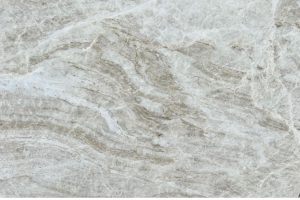1. Introduction
When it comes to woodworking, choosing the right stain can make a significant difference in the final appearance of your project. Two popular options that often perplex DIY enthusiasts and professionals alike are Jacobean and Dark Walnut stains. Both of these stains have their unique characteristics and appeal, making them stand out in the world of wood finishes. In this article, we will delve into the differences, similarities, and best uses for Jacobean and Dark Walnut stains to help you make an informed decision for your next woodworking endeavor.
2. What is Jacobean Stain?
Jacobean stain is a popular wood finish that delivers a classic and elegant look. It is a dark-colored stain that enhances the natural beauty of the wood while providing it with a rich, deep tone. Typically, Jacobean stain is darker than traditional walnut stains, creating a bold statement on the wood’s surface. It works exceptionally well on hardwoods such as oak, cherry, and maple.
2.1 Characteristics of Jacobean Stain
- Deep and dark tone
- Enhances wood grain
- Adds a touch of sophistication
- Ideal for hardwoods
- Dries relatively quickly
- Compatible with various finishes
3. What is Dark Walnut Stain?
Dark Walnut stain, as the name suggests, offers a deep walnut color with warm undertones. This stain provides a timeless and versatile look, making it suitable for a wide range of woodworking projects. It complements both traditional and contemporary designs, making it a favorite among woodworkers and interior designers.
3.1 Characteristics of Dark Walnut Stain
- Rich walnut color
- Versatile and timeless
- Accentuates wood’s natural beauty
- Works well on various wood types
- Requires longer drying time
- Compatible with different finishes
4. Similarities Between Jacobean and Dark Walnut Stains
Despite their distinct characteristics, Jacobean and Dark Walnut stains share some common features:
- Both stains provide a dark, rich color to the wood.
- They accentuate the wood’s natural grain, adding depth and character.
- Both stains work well on a variety of wood species, offering versatility in application.
- Jacobean and Dark Walnut stains are compatible with different types of finishes, allowing you to achieve the desired sheen and protection.

5. Differences Between Jacobean and Dark Walnut Stains
While Jacobean and Dark Walnut stains share similarities, they do have noticeable differences:
- Color Tone: Jacobean stain is generally darker and creates a more dramatic effect compared to Dark Walnut stain.
- Undertones: Dark Walnut stain has warm undertones, giving the wood a cozy, inviting feel, while Jacobean stain tends to have cooler undertones, providing a sophisticated touch.
- Suitable Wood Types: Jacobean stain is best suited for hardwoods, while Dark Walnut stain complements both hardwoods and softwoods.
- Drying Time: Jacobean stain dries faster than Dark Walnut stain, which may require more time to cure properly.
6. Best Uses for Jacobean Stain
Jacobean stain’s dark and sophisticated appearance makes it ideal for various projects:
- Hardwood Furniture: Enhance the natural beauty of hardwood furniture pieces like tables, chairs, and cabinets with Jacobean stain.
- Flooring: Transform your hardwood floors with Jacobean stain for a timeless, elegant look.
- Wooden Handrails: Add a touch of luxury to your staircases by staining the handrails with Jacobean stain.
- Decorative Items: Jacobean stain can be used to stain smaller wooden decorative items like picture frames and wall art.
7. Best Uses for Dark Walnut Stain
Dark Walnut stain’s versatility makes it suitable for a wide range of applications:
- Antique Reproductions: Use Dark Walnut stain to recreate the vintage look on new furniture or antique reproductions.
- Cabinetry: Revamp your kitchen or bathroom cabinets with Dark Walnut stain for a classic and stylish finish.
- Doors and Trim: Apply Dark Walnut stain to interior doors and trim for a warm and inviting ambiance.
- Wooden Crafts: Create stunning wooden crafts and DIY projects using Dark Walnut stain for an elegant touch.
8. Choosing Between Jacobean and Dark Walnut Stains
Selecting the right stain depends on your project’s specific requirements:
- For a Bolder Look: If you desire a darker and more dramatic appearance, Jacobean stain may be the better choice.
- Timeless Versatility: Opt for Dark Walnut stain when aiming for a classic finish that complements various design styles.
- Consider the Wood Type: Take into account the wood species you are using, as some woods may respond better to one stain over the other.
- Test Samples: Before proceeding with the entire project, test both stains on a small, inconspicuous area to see which one aligns best with your vision.
9. Tips for Applying Stain Effectively
To achieve the best results, follow these tips when applying Jacobean or Dark Walnut stain:
- Surface Preparation: Ensure the wood is clean, smooth, and free from any previous finishes or contaminants.
- Stain Evenly: Apply the stain evenly across the wood’s surface using a brush, cloth, or sponge.
- Wipe Off Excess: After applying the stain, gently wipe off any excess to avoid uneven or blotchy appearances.
- Seal the Stain: Once the stain has dried, apply a protective sealant or finish to preserve and enhance the wood’s appearance.
10. Protecting and Maintaining Stained Wood
To prolong the beauty of your stained wood projects, consider the following maintenance tips:
- Regular Cleaning: Dust and clean stained surfaces regularly to prevent debris buildup.
- Avoid Harsh Cleaners: Use mild, non-abrasive cleaners to maintain the stain’s integrity.
- Periodic Refinishing: Depending on the level of wear, periodic refinishing may be necessary to keep the wood looking fresh.
Conclusion
In the realm of woodworking, the choice between Jacobean and Dark Walnut stains boils down to personal preferences and the desired aesthetic for your project.
Can I use Jacobean and Dark Walnut stains on the same project?
Yes, you can use both stains on the same project to create a unique and custom look. Consider using one stain as the base color and the other as a highlight or accent.
How do I determine the best stain for my specific wood type?
It’s essential to test the stains on a small, inconspicuous area of the wood to see how they interact with the specific wood type you are using. Choose the one that best complements the wood’s natural grain and color.
Can I mix Jacobean and Dark Walnut stains to create a custom color?
Yes, you can experiment by mixing different stains to create a custom color. However, make sure to test the mixture on a scrap piece of wood first to ensure you achieve the desired hue.
How long does it take for Jacobean and Dark Walnut stains to dry completely?
Jacobean stain typically dries within a few hours, while Dark Walnut stain may take longer, up to 24 hours or more, depending on environmental conditions.
Do I need to sand the wood before applying the stain?
Yes, it’s essential to sand the wood surface thoroughly before applying the stain to ensure a smooth and even finish. Sanding also helps the stain penetrate the wood effectively.



